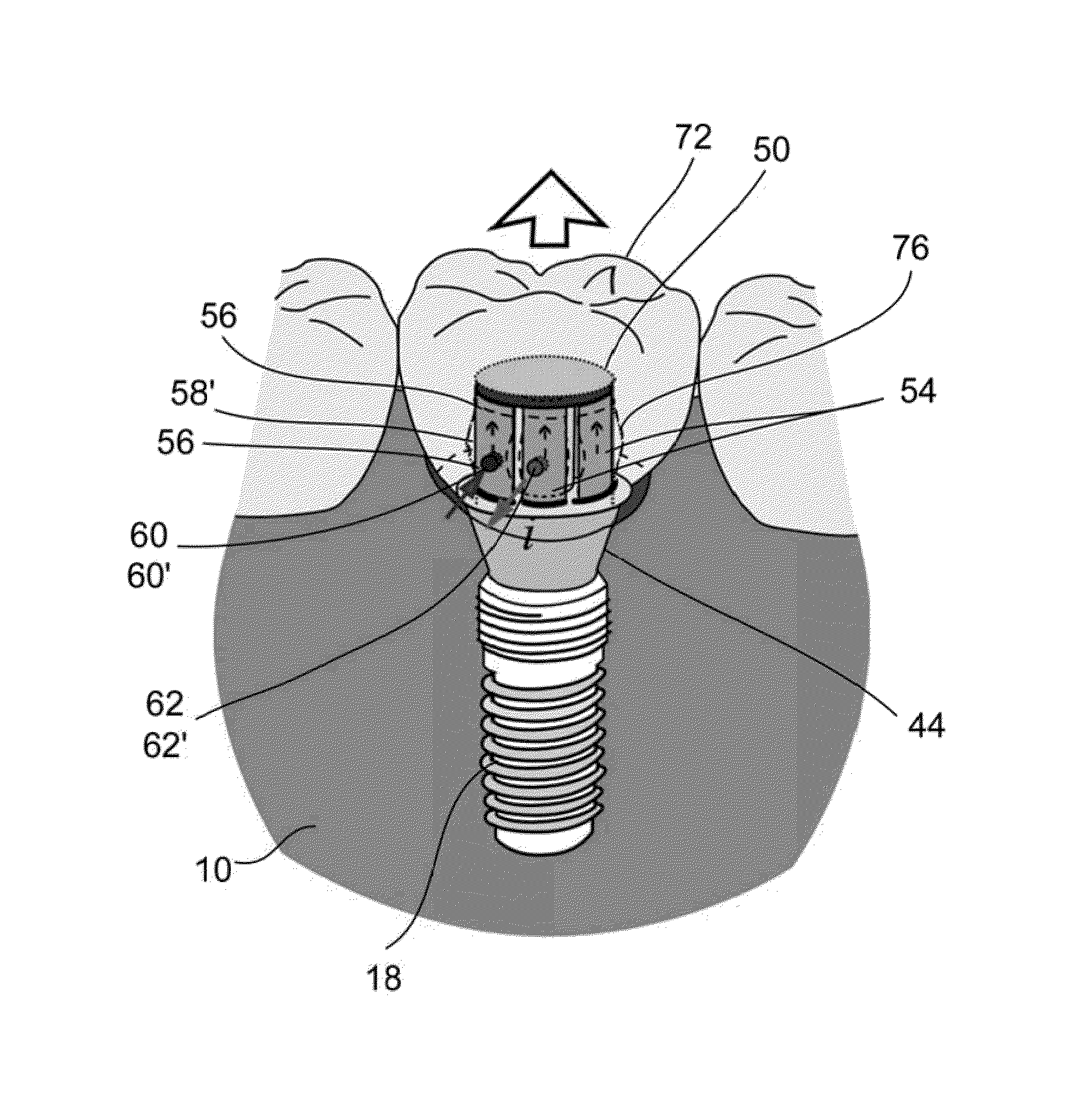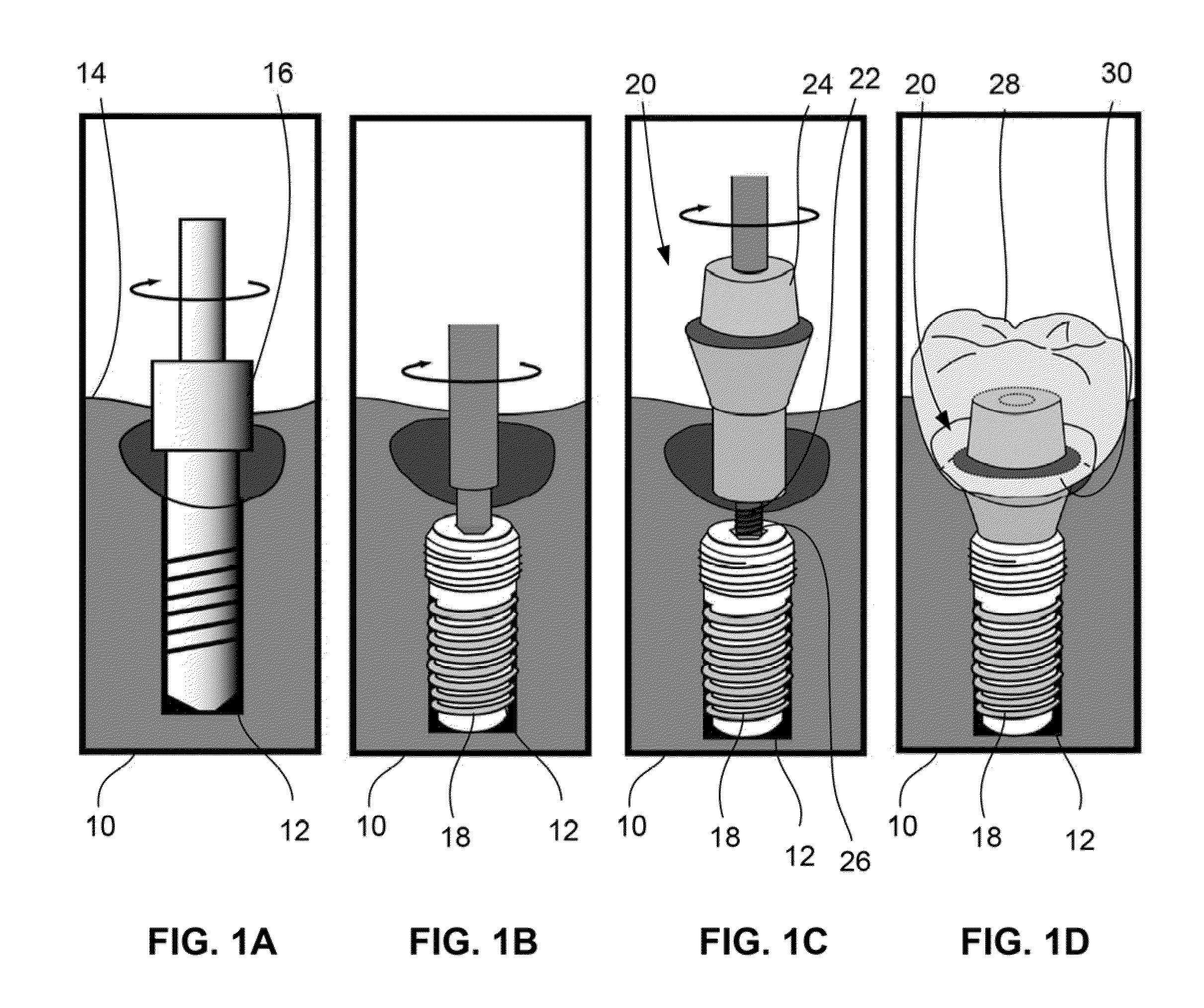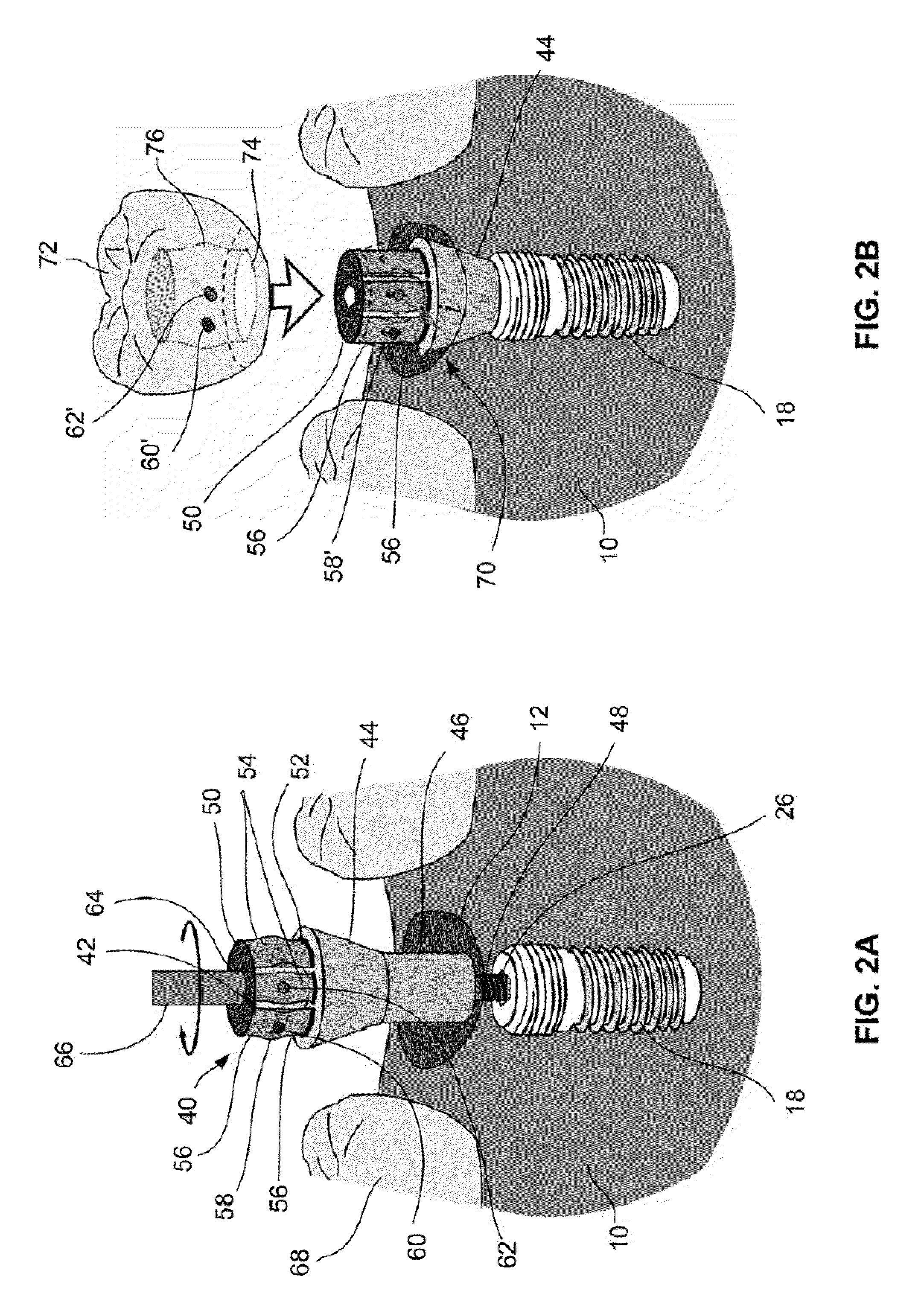Shape memory dental retention systems
a dental retention system and memory technology, applied in the field of shape memory dental retention system, can solve the problems of poor aesthetic appearance of the patient's dentition, low tolerance for mistakes, and crown chipping, and achieve the effect of effectively preventing relative movemen
- Summary
- Abstract
- Description
- Claims
- Application Information
AI Technical Summary
Benefits of technology
Problems solved by technology
Method used
Image
Examples
Embodiment Construction
[0103]In positioning and securing an oral appliance, such as a crown or bridge, within the mouth of a patient, the retaining assemblies described herein allow not only for secure attachment but also for adjustment of the crown or bridge along the patient's dentition. The assemblies described also provide for mechanisms and methods to facilitate the entire removal of the crown or bridge from the abutment. In utilizing the abutment assemblies described herein, any number of typical anchoring implants may be bored into the bones within the mouth of the patient to provide for the structural support of the abutment assembly. Moreover, the implants and abutment assemblies described herein may be utilized in any number of locations within the mouth of the patient, for instance, along the maxilla or mandible or other locations within the body which may benefit from an adjustable abutment assembly as described herein.
[0104]Turning now to FIG. 2A, one example of an abutment retaining assembly...
PUM
 Login to View More
Login to View More Abstract
Description
Claims
Application Information
 Login to View More
Login to View More - R&D
- Intellectual Property
- Life Sciences
- Materials
- Tech Scout
- Unparalleled Data Quality
- Higher Quality Content
- 60% Fewer Hallucinations
Browse by: Latest US Patents, China's latest patents, Technical Efficacy Thesaurus, Application Domain, Technology Topic, Popular Technical Reports.
© 2025 PatSnap. All rights reserved.Legal|Privacy policy|Modern Slavery Act Transparency Statement|Sitemap|About US| Contact US: help@patsnap.com



